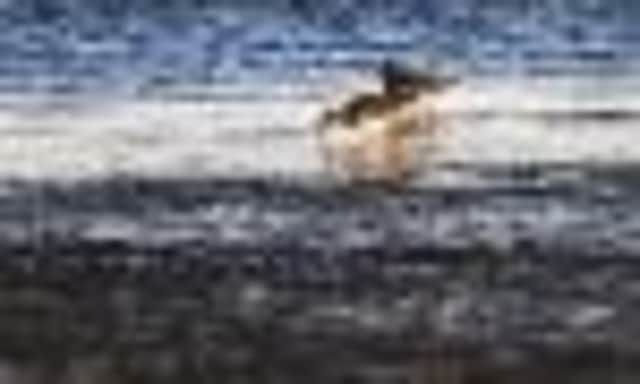RSPB Scotland farmland flood plan a bonus for birds


The proposals will be unveiled this week as part of an RSPB Scotland vision of how the floodplain between Stirling and Bo’ness can be regenerated to create natural flood defences and lost habitat.
The Inner Firth of Forth Futurescape project plans to return walled-off farmland, which was reclaimed from the sea, back to its natural state.
Advertisement
Hide AdAdvertisement
Hide AdArchitects of the project are working with councils and communities on how to adapt or move man-made defences that have divided the sea from the land for hundreds of years in a way that allows tidal waters to permeate coastal land again.


The RSPB planners believe returning the land to its natural state will make it better able to absorb climate change-related high tides and heavy rainfall while also regenerating the landscape for wildlife.
Last year, record downpours and flooding swamped much of the country costing millions of pounds in repairs, insurance claims and lost business, especially for farmers whose crops were destroyed.
The Forth area is one of the worst affected, with one in 13 homes and businesses at risk of flooding, compared to one in 22 homes and one in 13 businesses nationwide.
RSPB Scotland climate change policy officer Jim Densham will present the charity’s proposals at the European Climate Change Adaptation conference (ECCA) in Germany on Wednesday.
Speaking to Scotland on Sunday ahead of the event, which starts tomorrow, he said: “We need to adapt in quite large areas and take a landscape approach for wildlife to increase areas of protected habitat, but this is also about the idea of helping nature to help us. In the case of the Inner Firth of Forth it is about creating saltmarsh habitat that is really good at soaking up the power of waves and storm surges and reducing the threat of flooding both for farms, homes and businesses.
“The project is also very much about working in partnership with people to work out, for example, how much will sea levels rise, how vulnerable the coastline is and if you do begin habitat creation what will the value be in terms of flood defences? It is costly to repair sea defences and for drainage of land, and for some landowners that is becoming unviable to do.”
The RSPB-led initiative has identified a dozen sites owned by farmers and councils along the Forth of a total of about 600 hectares, as suitable for habitat restoration.
Advertisement
Hide AdAdvertisement
Hide AdAccording to RSPB estimates, such a project would cost between £2 million and £3m per 100 hectares.
The organisation is hoping to work with Scottish Environment Protection Agency (Sepa), Scottish Natural Heritage (SNH) and local authorities and landowners to develop trial schemes, before seeking funding from the Scottish Government to expand the initiative as part of a large-scale habitat creation across 2,000 hectares around the Falkirk and Alloa area.
Three of the locations identified by RSPB for the project cover more than 100 hectares each, including one at the village of Skinflats north of Grangemouth near the River Carron and River Forth. The other two key sites suggested for restoration are at Airth, on the banks of the Forth north of Falkirk, and the Inch of Ferryton in Clackmannanshire.
Sepa, which is working with the RSPB on the Inner Firth of Forth Futurescape, has estimated that dealing with flood damage costs around £30m annually in the Forth region alone.
In 2011, the agency highlighted the threat of flooding from local rivers and coastal waters around the Forth estuary in its National Flood Risk Assessment.
The agency warned that in future the Firth of Forth will be at even greater risk of flooding as the consequences of global warming hit Scotland.
A Sepa spokesman said: “As the climate changes, Scotland is expected to experience both rising sea levels and warmer, wetter winters.
“Predictions also indicate that Scotland will experience more extreme weather events during the summer months including intense rainfall – all of which means a higher likelihood of flooding events in areas such as the Forth Estuary.”
Advertisement
Hide AdAdvertisement
Hide AdUnder the Futurescape project, the RSPB’s hopes of creating a network of new wetland habitats including saltmarsh, mudflat and reedbeds around the Forth by 2030.
The charity stressed that it is still at the “embryonic” stage as it continues working with government agencies, councils and land managers.
Clackmannanshire Council’s enterprise and environment convener, Councillor Donald Balsillie said: “We are supportive of the project and are working in partnership with the RSPB and are happy to have our land used.
“As for the Forth itself, only a very small number of properties in Clackmannanshire are at risk of flooding.”